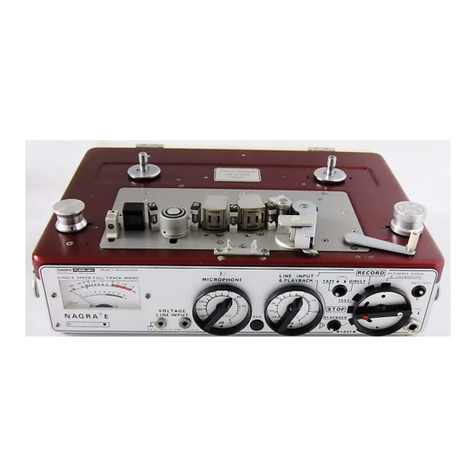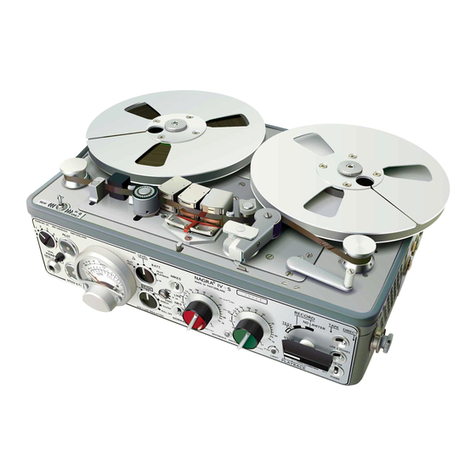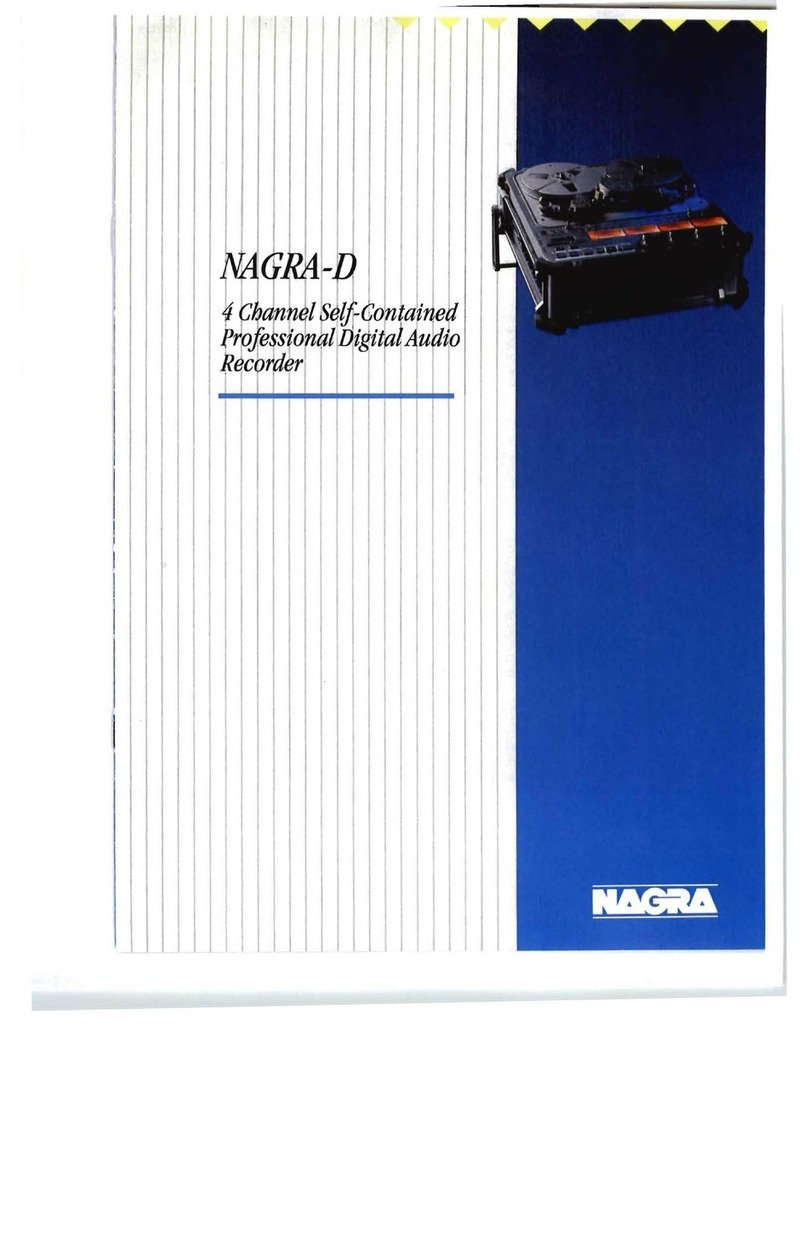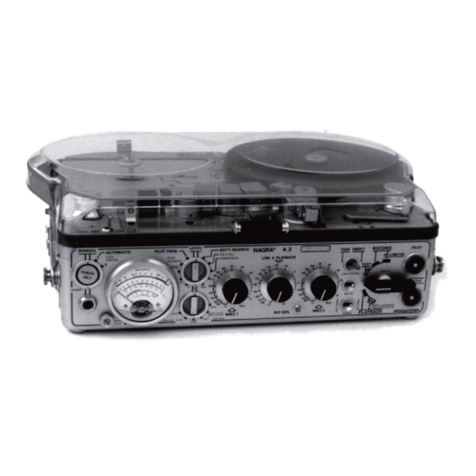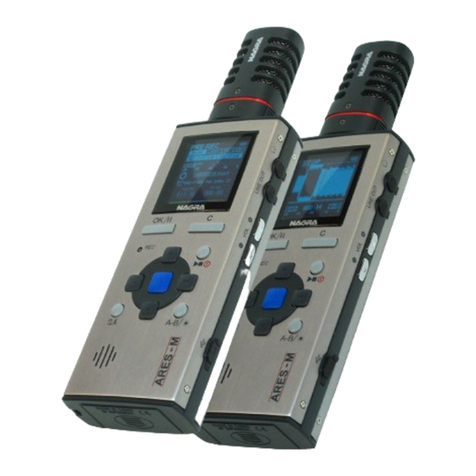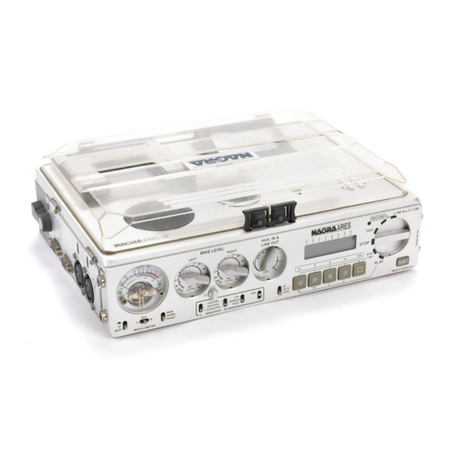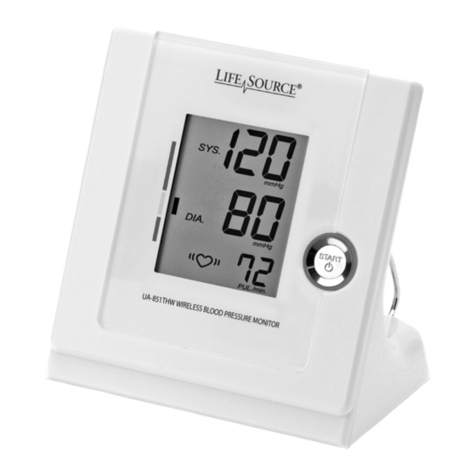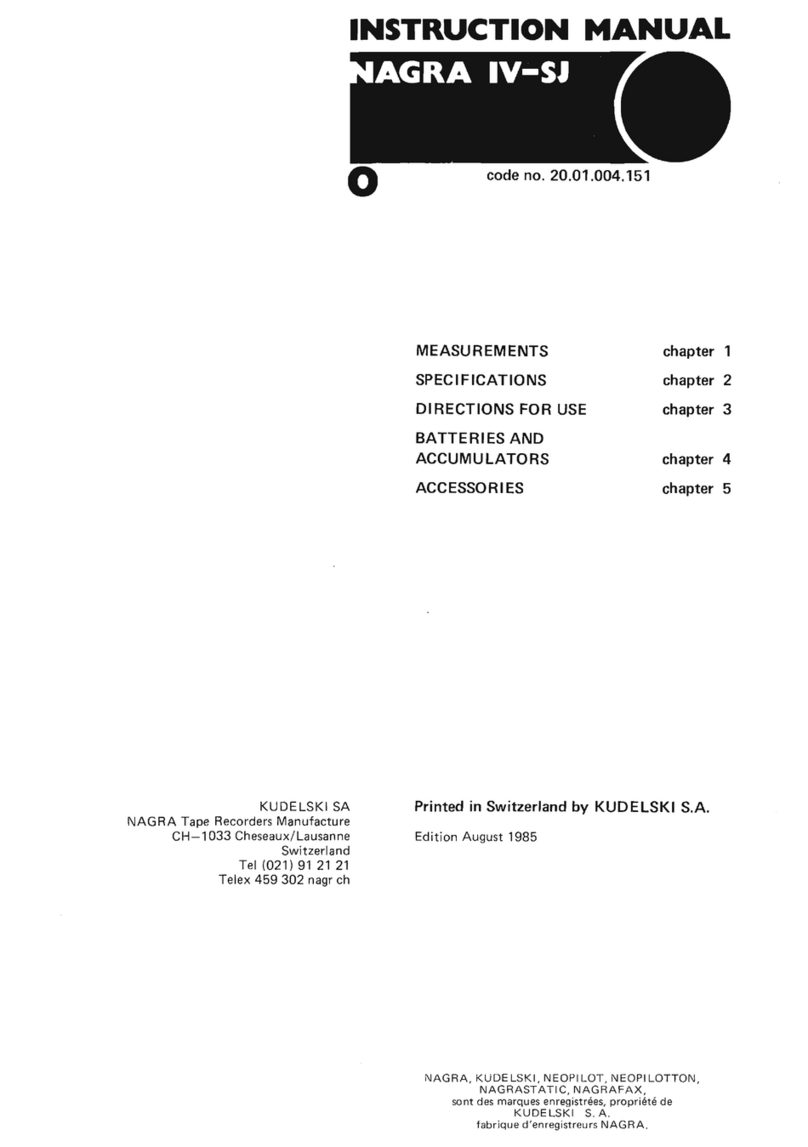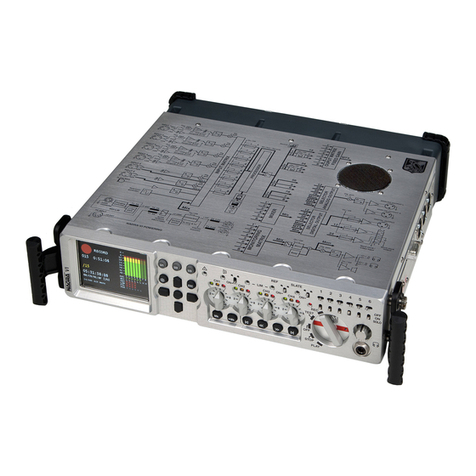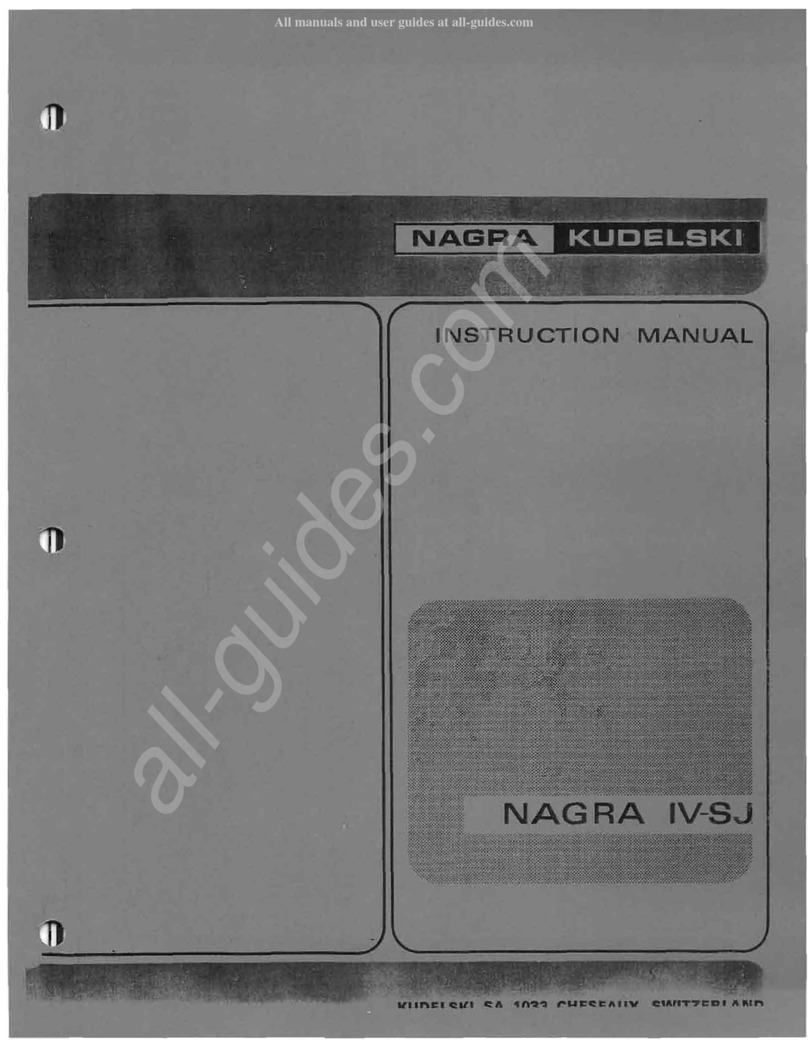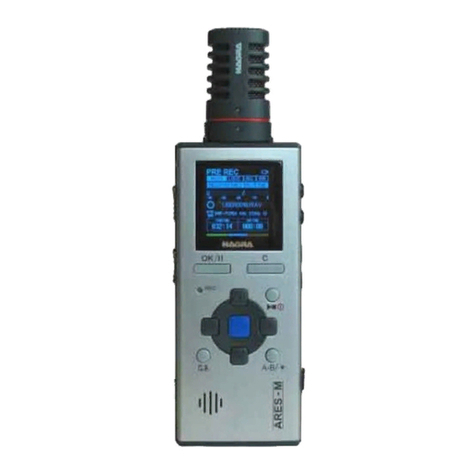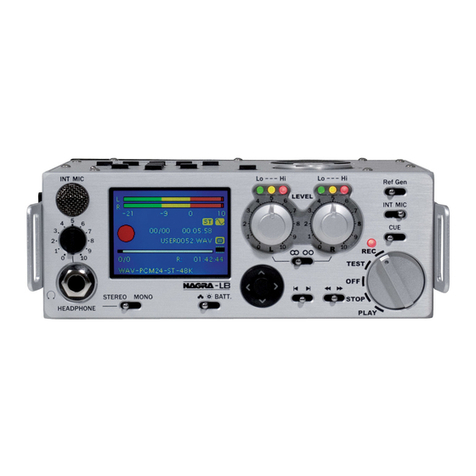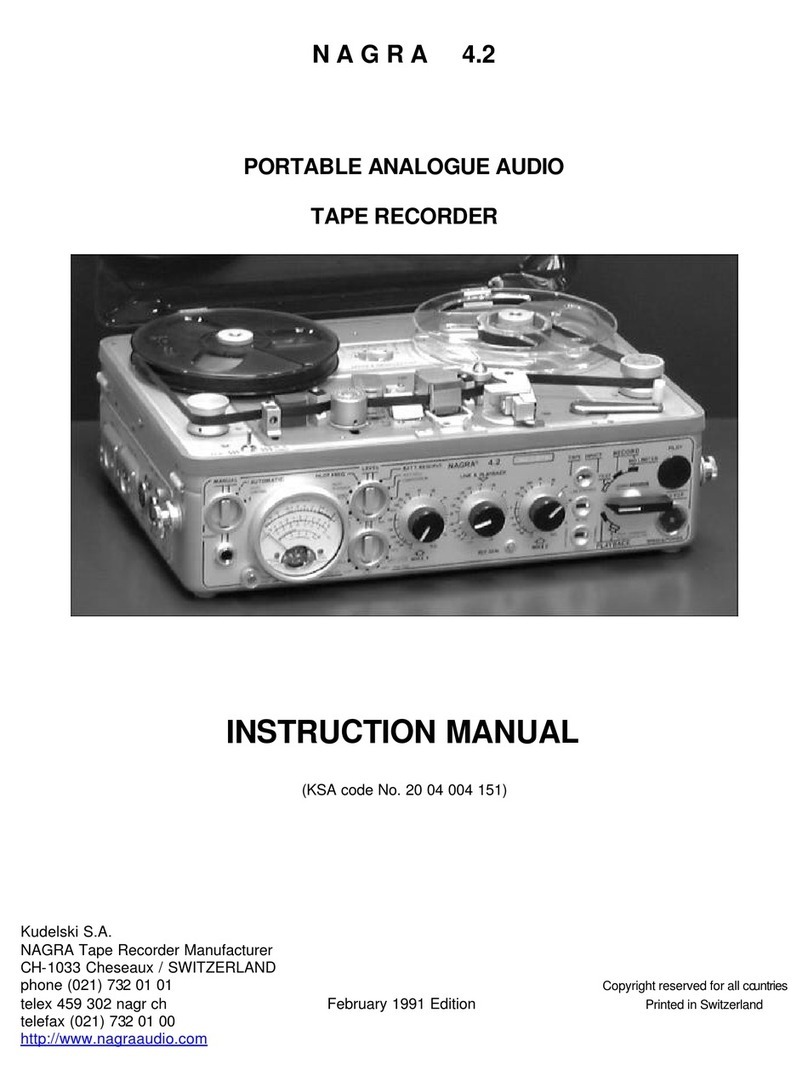Chapter I 6 May 2003
Meter (2)
The NAGRA V can be supplied with either a single or double
pointer modulometer. The double meter is greatly
appreciated in Cinema or two track applications while in
Music or broadcast applications the single pointer instrument
is often preferred. In both cases, the meter is microprocessor
controlled, and has ballistics similar to those of a
modulometer. It can also be used to indicate the condition of
the power source. Fitted with two leds, it will also show the
level of the corresponding channel in the 2 Channel menu
setting or the Highest when set to the Stereo mode.
The meter scale is calibrated from - to 0 in dB however, if the meter is selected to monitor the input
signal (internal jumpers) and there is an indication above the 0dB point, this means that the A/D
converter will be overloaded. The red area (-6 to 0 dB) is the headroom area. When the BATT switch
is pressed, the green area gives information about the power status. See more information in chapter
4.
The channel being indicated depends on the position of the meter selection switch #3 on machines
fitted with the single pointer version.
Attention: From the box motherboard 9131 300 000 B, when moving the 2 internal jumpers, the
meter can be set before or after the Line Output potentiometer. This can only be done by a Nagra
Service Center. See also chapter 4.
Meter Selection Switch (3)
The meter selection switch allows the operator to decide which channel, Left, Right or
MAX, will be displayed on the meter. The MAX position will indicate the highest level
obtained between the two channels and the leds will indicate which channel this corresponds to. From
the box motherboard 9131 300 000 B, the switch will monitor the selected channel in the headphones
in Solo mode (mono). Older boards can be modified to obtain this function. In the case that the
machine is equipped with a double modulometer, the switch #3 does not influence the modulometer
but only the solo selection for the headphones.
Mem / Norm / Reset Switch (4)
This is a three-position switch. In the NORM position the meter will indicate in the normal
manner according to the signal on the input or output (depending on the selection). In the
MEM position the highest obtained level (since the last reset) will be indicated. The reset
position is a snap-switch position and is used to reset the MEM mode. This switch can be moved freely
at any time without affecting the recording. In stereo operation of the machine the function of this
switch is linked to switch #3.
Mike Level Potentiometers (5)
These two potentiometers are used to finely control the sensitivity of the
microphone inputs. If the sensitivity selector is set to 0.2 mV/hPa and the level
potentiometer is set to 82 dB (maximum gain) and the modulometer shows 0
dB, this corresponds to an acoustic level of 82 dBspl.
The bold black area on the scale from 120 to 130 dB is an important indication.
If the potentiometer is set inside this area for the meter to indicate 0 dB, it
means that a 100 dB dynamic range is present. If the potentiometer needs to be
adjusted between 130 dB and 150 dB for the meter to indicate 0 dB, then this
indicates that the input signal is so strong that the microphone pre-amplifiers are overloaded. Above
the 120 dB mark indicating 0 dB on the meter will not cause the input stages to overload but the pre-
amp noise will increase.
